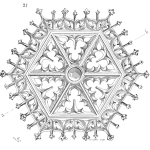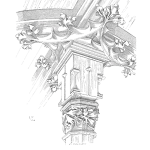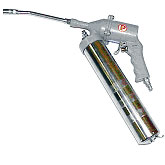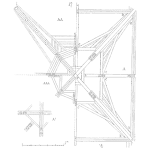Mature organizations seeking a competitive edge are familiar with the term Reliability Centered Maintenance (RCM). A maintenance philosophy encompassing predictive, preventative, and maintenance, RCM uses defined processes to find latent or hidden failure modes, customizing maintenance processes to maximize system performance. Most understand that the RCM philosophy enhances equipment availability through improved reliability, increasing annual earnings before interest, tax, and amortization (EBITDA). Yet, some businesses fail to understand that equipment availability comprises two crucial inputs, not one. Equipment reliability, yes, but also equipment maintainability. [Read more…]
on Maintenance Reliability
A listing in reverse chronological order of these article series:
- Usman Mustafa Syed — Aasan Asset Management series
- Arun Gowtham — AI & Predictive Maintenance series
- Miguel Pengel — Asset Management in the Mining Industry series
- Bryan Christiansen — CMMS and Reliability series
- James Reyes-Picknell — Conscious Asset series
- Alex Williams — EAM & CMMS series
- Nancy Regan — Everday RCM series
- Karl Burnett — History of Maintenance Management series
- Mike Sondalini — Life Cycle Asset Management series
- James Kovacevic — Maintenance and Reliability series
- Mike Sondalini — Maintenance Management series
- Mike Sondalini — Plant Maintenance series
- Andrew Kelleher — Process Plant Reliability Engineering series
- George Williams and Joe Anderson — The ReliabilityXperience series
- Doug Plucknette — RCM Blitz series
- Robert Kalwarowsky — Rob's Reliability Project series
- Gina Tabasso — The Intelligent Transformer Blog series
- Tor Idhammar — The People Side of Maintenance series
- André-Michel Ferrari — The Reliability Mindset series
Part III: The 4 Basic Physical Failure Mechanisms of Component Failure: Overload

Author’s Note: I want to reiterate that this Series about reading the basic fracture surfaces, is for novices who often first come into contact with such failed components. This Series is about the basics (101), and is intended to give readers an appreciation for the value of such ‘broken’ parts to an effective investigation/RCA. While this information will be rudimentary to seasoned materials engineers, I know they will all appreciate heightening awareness to the need to retain such failed parts for analysis, versus throwing them away and just replacing the part. Throwing away failed parts is a recipe for a repeat failure, when one does not understand why the part failed in the first place.
Understanding the Importance of Machine Bases
How to ensure your assets are on a solid foundation
 Installing an asset is a critical step that can impact reliability short term and long term. Often times assets are installed without much thought. They are thrown on the machine base, anchors drilled and away the operation goes.
Installing an asset is a critical step that can impact reliability short term and long term. Often times assets are installed without much thought. They are thrown on the machine base, anchors drilled and away the operation goes.
But while focusing on the Installation – Potential Failure – Failure curve, it becomes obvious that time and precision during the installation point can greatly extend the life of the asset. By investing in the installation, the asset will experience less premature failures and extend any wear out mechanisms that are present in the asset.
[Read more…]
Maintenance and Reliability Improvement with Uptime

Maintenance and Reliability improvement are keys to Operational Excellence – without them, you’ll suffer high costs and reduced outputs. This interview by Ryan Chan of UpKeep gives insight into what Uptime is, how it works towards Maintenance and Reliability improvement. The value it can deliver is high, how it does it is straight-forward, and leaders are needed to make it happen.
Part II: The 4 Basic Physical Failure Mechanisms of Component Failure: Fatigue & Overload

Author’s Note: I want to reiterate that this Series about reading the basic fracture surfaces, is for novices who often come into contact with such failed components. This Series is about the basics (101), and is intended to give readers an appreciation for the value of such ‘broken’ parts to an effective investigation/RCA. While this information will be rudimentary to seasoned materials engineers, I know they will all appreciate heightening awareness to the need to retain such failed parts for analysis, versus throwing them away and just replacing the part. Throwing away failed parts is a recipe for a repeat failure, when one does not understand why the part failed in the first place.
Who Owns Equipment Reliability?
Why maintenance performance alone will not deliver sustainable performance
 More than once or twice, I have heard, if we just got the maintenance department sorted out, our OEE would increase. I have heard this coming from not only operations and management, but also maintenance staff. While it is true that how effective and efficient the maintenance department is will have a direct impact on the operation’s performance, it is not maintenance alone that will enable success.
More than once or twice, I have heard, if we just got the maintenance department sorted out, our OEE would increase. I have heard this coming from not only operations and management, but also maintenance staff. While it is true that how effective and efficient the maintenance department is will have a direct impact on the operation’s performance, it is not maintenance alone that will enable success.
[Read more…]
Emerging Stronger from Crisis

Emerging stronger from crisis – that’s our current challenge. We know we can do it. What doesn’t kill us makes us stronger. Our businesses can emerge stronger too, but that won’t happen without leadership and choice.
Capital asset-intensive industries that have had a chance to pause have been wise if they used the opportunity to catch up on deferred maintenance and review their proactive maintenance programs for effectiveness. They will emerge stronger. Better maintained equipment will run better, longer, and last longer, producing more and doing so with lower levels of risk.
The 4 Physical Failure Mechanisms of Component Failure: The Basics (Part I)

This article is directed at those ‘first responders’ who arrive immediately at the failure scene. These are the people who have to ensure the area is safe, preserve the scene for investigators and contribute to a plan to expedite a quick, safe return to production norms.
Many do not understand how valuable failed parts are to the metallurgical/forensic investigators. Broken parts are to metallurgists’, like the murder weapon is to a forensic crime investigator.
The 9 Indicators of an Effective Lubrication Program
Understanding the Key Components of an Effective Lubrication Program
 Lubrication is often overlooked in organizations. Why it is overlooked, I am unsure. Maybe it is because it is considered to be a basic job, given to the apprentice, or it is just too simple to not to do it correctly.
Lubrication is often overlooked in organizations. Why it is overlooked, I am unsure. Maybe it is because it is considered to be a basic job, given to the apprentice, or it is just too simple to not to do it correctly.
However, with a focus on lubrication, many failure mechanisms can be reduced and the equipment life prolonged. But implementing an effective and world-class lubrication program is not simple. It requires a dedicated focus to implement and sustain. Below is my list of what I look for when evaluating a lubrication program.
[Read more…]
Uptime Insights – 9 – Teamwork for results

There’s an old saying that, “two heads are better than one”. Teamwork has been proven time and again to produce superior results. It is the basis for many successful methods like RCM-R, PMR/O, RCFA, Total Productive Maintenance (TPM) and various quality improvement programs like Six Sigma. The various methods that help us while Choosing Excellence depend on a foundation of teamwork. Beyond facilitated teamwork, self-organized teams are even more effective.
Name that Failure Pattern (3)…

Can you identify and name this fracture pattern?
How can you tell it is that fracture pattern?
Where are the origin(s) of the failure on the fractured surface?
How can you tell where the origin(s) are?
A Review of Proper Grease Gun Use
Preventing Contamination During Lubrication
 I can remember the first time I was told to grease a bearing. I ask the millwright “How do I know when there is enough grease?”. He responded, ” When you see it come out of the sides of the bearing”… How many of you had this same experience?
I can remember the first time I was told to grease a bearing. I ask the millwright “How do I know when there is enough grease?”. He responded, ” When you see it come out of the sides of the bearing”… How many of you had this same experience?
During this brief instruction, there was no mention of selecting the right grease, preventing contamination, etc. So, with this experience in mind, I wanted to provide what I believe are best practices when using a grease gun. Why do I think there needs to be a review of how to grease with a grease gun? I still see manual lubrication performed with no regard for best practices, and lubrication is still a major contributor to equipment failures.
[Read more…]
Selecting CMMS Systems: Considerations for Small and Medium-Sized Enterprises

CMMS systems were developed and became available around 1965. Traditionally, CMMS software was reserved for big companies that needed to automate and organize large, complex maintenance operations. Only the largest manufacturing firms were able to use maintenance software back then, but things have changed dramatically since those days.
How Can CMMS Supplement Fault Tree Analysis
Fault tree analysis (FTA) is used to establish a potential chain or path of equipment failures using Boolean logic to generate a graphical relationship of events leading to part or system failure. It is a deductive approach that is useful for different systems or facilities at the product design or operational stages. FTA fosters reliability of systems by: [Read more…]
Uptime Insights – 8 – Asset Reliability

You can wait for something to break, then fix it, or you can be proactive and manage the failure before it causes you problems. Being proactive is all about managing failures and their consequences before they occur. The failure itself, in some cases, is unavoidable, but how you manage consequences is entirely within your control.
 Ask a question or send along a comment.
Please login to view and use the contact form.
Ask a question or send along a comment.
Please login to view and use the contact form.